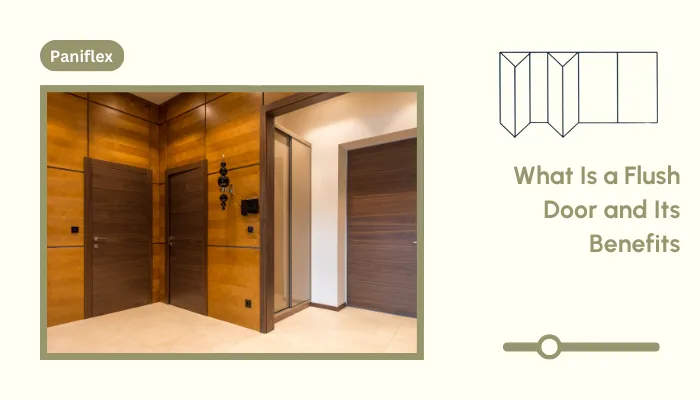Architecture has evolved beyond form and function to become a strategic tool for storytelling. Branded spaces now serve as powerful extensions of a company’s identity, integrating spatial design with corporate strategy to create environments that are both visually compelling and deeply aligned with brand values.
This fusion prioritizes customer experience and emotional engagement, turning spaces into immersive narratives that captivate visitors and communicate a brand’s ethos.
From flagship stores to corporate campuses, architectural branding is reshaping how businesses present themselves in a competitive world.
Ready to experience the benefits of custom closet doors? Explore our range of Paniflex products now.
This blog explores the convergence of architecture and branding, its impact on consumer engagement, and the trends defining the future of branded environments.
For professionals navigating this evolving discipline, understanding architectural branding is essential for creating meaningful and lasting connections.
The Integration of Architecture and Branding
The blend of architecture and branding has revolutionized how spaces are designed, creating environments that seamlessly combine functionality, aesthetics, and brand storytelling. This integration allows businesses to communicate their identity through every architectural detail.
1. Bridging Two Disciplines
The boundaries between architecture and branding have increasingly blurred, leading to a seamless integration of these two fields. No longer limited to visual identities like logos and color palettes, branding now influences the design of physical spaces, shaping how a brand is perceived through its environments.
This integration reflects a response to modern consumer behavior. People now expect spaces to do more than function—they want environments that evoke emotions and align with their values. Businesses, in turn, are leveraging architectural design to reflect their mission, foster deeper connections, and set themselves apart in competitive markets.
2. The Role of Technology in Shaping Branded Environments
Technology has been instrumental in connecting architecture and branding, transforming the way spaces are designed and experienced. Advanced tools allow architects and branding experts to collaborate effectively, ensuring that every detail—from layouts to finishes—contributes to the overall brand narrative.
Key Technological Drivers
- Building Information Modeling (BIM): Facilitates real-time design adjustments while integrating branding elements into architectural plans.
- Virtual Reality (VR): Offers immersive previews of spaces, enabling stakeholders to experience branded environments before they are built.
- Artificial Intelligence (AI): Provides data-driven insights into consumer preferences, shaping designs that enhance engagement and functionality.
Through these technologies, architects and branding professionals can achieve a level of precision and storytelling that was previously unattainable.
3. From Static Spaces to Dynamic Experiences
The integration of branding into architecture has redefined spaces as immersive experiences rather than static structures. Branded environments are now designed to tell stories, evoke emotions, and build memorable connections with consumers.
Case in Point
Nike’s flagship stores exemplify this approach. By incorporating interactive displays, personalized customization stations, and innovative design, these spaces go beyond retail. They showcase Nike’s commitment to innovation, performance, and customer engagement, turning shopping into a dynamic brand experience.
The Impact of Architectural Branding on Consumer Experiences
Architectural branding transforms physical spaces into powerful tools for engagement, shaping consumer perceptions and fostering emotional connections. By integrating design with storytelling, branded environments create immersive experiences that resonate deeply with their audiences.
1. Spaces as Storytellers
Architectural branding transforms physical spaces into narratives that communicate a brand’s essence. Every element—whether it’s the choice of materials, lighting, or spatial arrangement—becomes part of a cohesive story that reflects the brand’s identity and values.
When consumers step into a branded space, they aren’t just entering a building; they’re engaging with a carefully curated environment. For example, Apple’s flagship stores are designed to embody the brand’s ethos of simplicity, innovation, and user-centricity. The clean lines, open layouts, and interactive displays are intentional choices that reflect Apple’s philosophy and create a seamless experience for visitors.
2. Multi-Sensory Environments
Modern branded spaces engage more than just the visual senses. By incorporating sound, texture, lighting, and even scent, architects create environments that connect with consumers on an emotional level. This multi-sensory approach ensures that visitors don’t just see the brand—they feel it.
Example of Multi-Sensory Branding
Nike’s House of Innovation in New York City goes beyond traditional retail design by offering an interactive, sensory-rich experience. The store features customizable product stations, responsive digital displays, and materials that reflect the brand’s commitment to performance and personalization. These elements create a lasting impression, making the space a memorable touchpoint for consumers.
3. Immersive Experiences Foster Deeper Connections
Architectural branding redefines consumer engagement by turning spaces into immersive experiences. When consumers interact with a brand through an engaging environment, they build stronger emotional connections, which often translate into increased loyalty.
A Notable Case
The Lego House in Billund, Denmark, exemplifies this concept. Designed as a celebration of creativity and play, the space features interactive zones, workshops, and exhibits that reflect the brand’s core values. Visitors are encouraged to participate, explore, and create—transforming their interaction with the brand into a personal and meaningful experience.
4. Aligning Design with Consumer Expectations
Branded spaces are no longer about aesthetics alone—they must cater to the evolving expectations of consumers. This includes creating environments that are adaptable, accessible, and reflective of current values like sustainability and inclusivity. Brands that successfully integrate these elements into their spaces demonstrate their commitment to meeting the needs of their audiences.
Case Studies: Successful Architectural Branding
Real-world examples of architectural branding reveal how spaces can become powerful extensions of a brand’s identity. These case studies illustrate how companies use design to create immersive experiences, enhance customer engagement, and communicate their values effectively.
1. Coca-Cola Headquarters: Celebrating Legacy and Innovation
Coca-Cola’s headquarters in Atlanta is a masterclass in architectural branding. The building’s curved facade, paired with bold red accents, reflects the iconic logo and embodies the brand’s energy and dynamism.
Inside, interactive exhibits and historical memorabilia bring Coca-Cola’s rich heritage to life, offering employees and visitors an immersive journey through the company’s storied past. This strategic use of design connects the space to the brand’s global identity while fostering pride and engagement.
2. BMW Welt: Precision and Performance
Located in Munich, Germany, BMW Welt (World) exemplifies the brand’s commitment to innovation, craftsmanship, and luxury. The structure’s sleek, futuristic design aligns with BMW’s focus on high-performance engineering.
Visitors are invited to explore interactive exhibits, test-drive vehicles, and witness their car’s delivery in a highly theatrical setting. By merging functionality with a compelling brand narrative, BMW Welt elevates the customer experience and reinforces its premium identity.
3. Nike House of Innovation: Personalization Meets Immersion
Nike’s flagship stores, branded as the “House of Innovation,” redefine retail spaces by integrating interactive elements that reflect the brand’s ethos of performance and creativity. Features like customizable product stations, large-scale digital displays, and open layouts engage customers on a personal level. These stores aren’t just about shopping—they’re about experiencing Nike’s brand values firsthand.
4. Armani Hotel: The Epitome of Elegance
The Armani Hotel in Dubai seamlessly incorporates the brand’s sophisticated identity into its architecture. From the understated luxury of its interiors to the attention to detail in every room, the space reflects Giorgio Armani’s design philosophy.
The hotel’s sleek, minimalist aesthetic reinforces the brand’s association with timeless elegance, ensuring that every visitor experiences the essence of Armani’s style.
5. Lego House: A Playground of Creativity

Located in Billund, Denmark, the Lego House captures the brand’s core values of creativity, imagination, and play. The building itself resembles a stack of oversized Lego bricks, immediately drawing a connection to the brand.
Inside, themed zones encourage visitors to participate in workshops, explore interactive exhibits, and build their creations. This immersive space not only celebrates Lego’s identity but also deepens the bond between the brand and its fans.
The Future of Architectural Branding
As architectural branding continues to evolve, it is reshaping how businesses approach design and strategy. With advancements in technology, shifting consumer expectations, and a growing emphasis on sustainability, the future of branded environments promises to be more dynamic and impactful than ever.
1. Personalization Through Technology
The rise of artificial intelligence (AI) and machine learning is transforming how spaces are designed and experienced. Future branded environments will adapt in real time to user preferences, creating hyper-personalized experiences that cater to individual needs.
Emerging Innovations
- AI-Driven Design: Predictive tools will help architects anticipate user behaviors and tailor designs for optimal engagement.
- Interactive Environments: Technologies like augmented reality (AR) and responsive lighting will allow spaces to evolve dynamically based on user interactions.
- Data-Driven Insights: Analytics will provide feedback on how consumers interact with spaces, enabling continuous improvement in design.
2. Sustainability and Ethical Design
Sustainability will play an increasingly important role in architectural branding. As consumers demand greater environmental responsibility, brands will need to integrate green practices into their built environments.
Key Trends
- Eco-Friendly Materials: Using sustainable resources to align with environmental values.
- Energy Efficiency: Designing buildings that minimize energy consumption through innovative systems and renewable energy.
- Circular Design: Creating spaces that can be repurposed or deconstructed with minimal waste.
Why It Matters
Sustainable branded environments not only demonstrate corporate responsibility but also resonate with consumers who value eco-conscious practices. This alignment of values strengthens emotional connections and enhances brand loyalty.
3. Immersive and Experiential Branding
Future branded spaces will prioritize creating immersive experiences that engage all senses. Multi-sensory environments, interactive displays, and virtual reality (VR) will continue to redefine how consumers experience brands.
Future Possibilities
- Virtual Reality Spaces: Immersive digital environments that allow users to explore brands from anywhere in the world.
- Blended Physical-Digital Experiences: Spaces that seamlessly integrate physical and virtual elements to create layered, interactive narratives.
- Emotion-Driven Design: Using technology to evoke specific emotional responses through lighting, soundscapes, and tactile materials.
4. Evolving Corporate Strategies
Architectural branding will continue to redefine corporate strategy by embedding brand values into physical environments. This holistic approach will integrate branding into all facets of business, from retail and offices to real estate and hospitality.
Opportunities Ahead
- Diversification: Brands will expand into new industries, such as branded residential spaces and co-working environments, to deepen consumer engagement.
- Community-Centric Spaces: Emphasis on creating inclusive environments that reflect societal and cultural values.
- Strategic Partnerships: Collaborations with artists, designers, and technologists to push the boundaries of branded experiences.
5. Challenges on the Horizon
Despite its potential, architectural branding faces challenges that professionals must address:
- Balancing Creativity and Authenticity: Ensuring spaces are innovative without losing sight of brand identity.
- Keeping Up with Technology: Rapid advancements require constant adaptation and skill development.
- Addressing Overcrowded Markets: As more companies invest in branded spaces, differentiation will become increasingly challenging.
Ready to experience the benefits of custom closet doors? Explore our range of Paniflex products now.
Conclusion
The future of architectural branding is one of limitless possibilities. By combining technology, sustainability, and experiential design, architects and brands can create spaces that redefine how people interact with environments and businesses.






